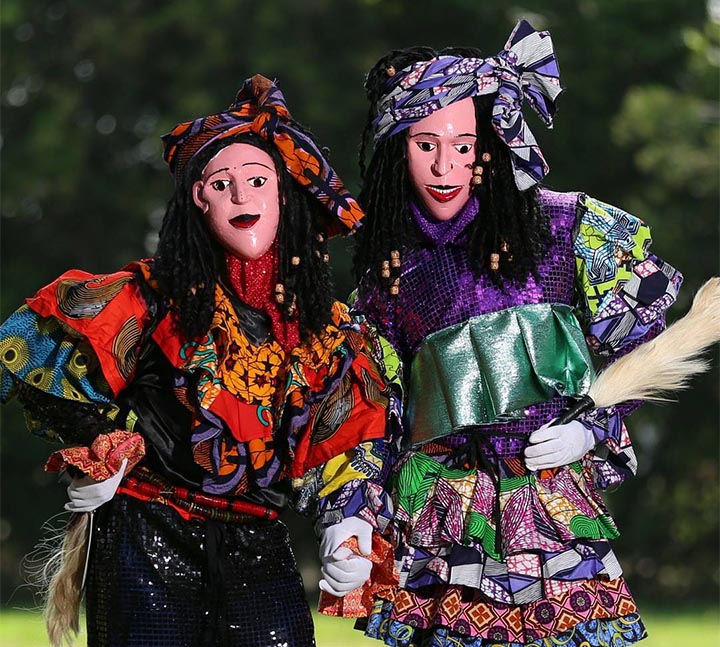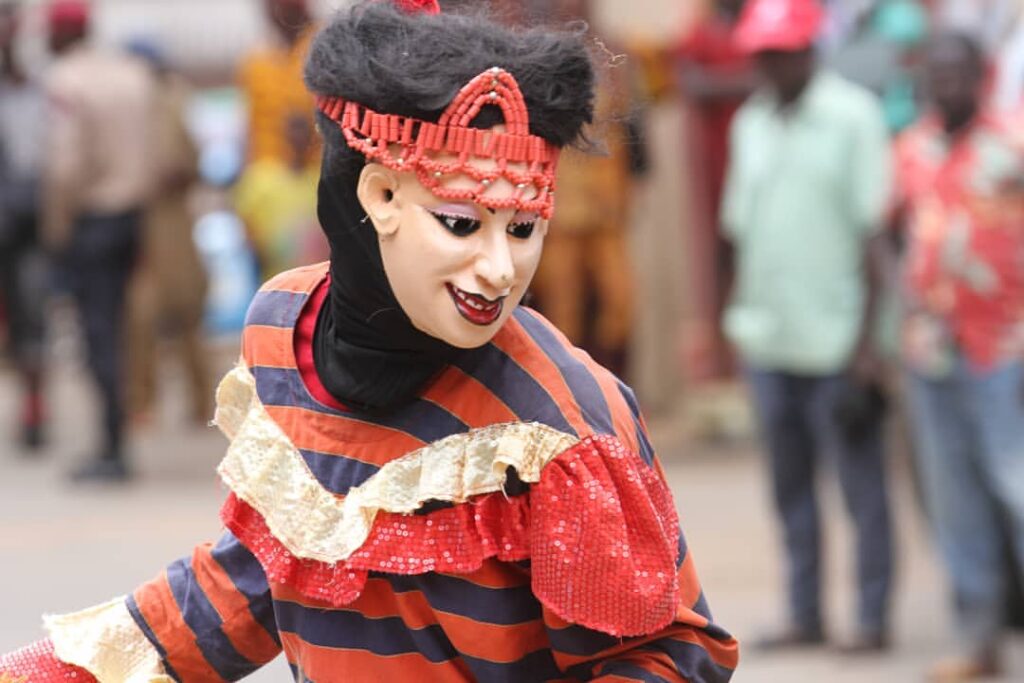Adamma masquerade is a beautiful female masquerade that is adorned with colourful attire and wears a wooden mask that is painted with beautiful designs.
The mask is usually decorated with various patterns, colours, and symbols that represent different elements of Igbo culture.
Adamma is a popular masquerade in Enugu and Anambra States in the Eastern part of Nigeria. It is a significant and unique part of the cultural heritage of the Igbo people.
The origin of the Adamma masquerade dates back to the pre-colonial Anambra state. Historically, there are different stories that permeate the origin of the Adamma Masquerade. One of such is the legend of a young woman named Adamma from Umuomaku who was famous for her beauty and kind heart. Her character endeared her to the entire community. Her parents were proud of her, and everyone in the village adored her.
One of such is the legend of a young woman named Adamma from Umuomaku who was famous for her beauty and kind heart. Her character endeared her to the entire community. Her parents were proud of her, and everyone in the village adored her.
Legend has it that Adamma got lost while fetching water from a nearby stream. She was abducted by some strange men and taken to a far-off land where she was forced to work as a slave. She toiled hard and was subjected to inhumane treatment by her captors.
Years later, Adamma escaped from her captors and returned to her village. However, she had changed significantly due to her experiences in captivity. She had become withdrawn and barely spoke to anyone. Her once-beautiful face was now covered in scars, and her body was frail.
The villagers were shocked at her appearance and could not believe that their once-beautiful Adamma had returned in that state. The village elders gathered to discuss how to rehabilitate her, and they decided to hold a masquerade to welcome her back home.
The Adamma masquerade was created in honor of the young woman. The masquerade is symbolic of Adamma’s beauty, grace, and resilience. It is believed that through the Adamma masquerade, the community can connect with Adamma’s spirit and draw strength from her resilience and courage.
It is also believed that Adamma masquerade originated from Ala, the goddess of fertility. The masquerade is named after Ala’s first daughter, Adamma (meaning ‘first daughter of the earth’) is believed to have brought blessings and abundance to the Igbo people. As such, the Adamma masquerade is a symbol of the goddess’s divine blessings and the people’s reverence for her.
Read Also: The Place Of The Rainbow: Victoria Falls
The Adamma masquerade is not just an entertainment display but also a means of communication and social cohesion.
During the masquerade display, the dancers wear colorful costumes and perform elaborate dance steps while the masquerade’s headpiece covers their face.
The Adamma masquerade is a celebration of the Igbo culture and tradition. It is usually performed during festivals, such as the New Yam Festival and the Ofala Festival. During these festivals, the masquerade is believed to bring blessings and prosperity to the Igbo people.
The Adamma masquerade is also a symbol of the Igbo people’s hospitality and generosity. It is a way of welcoming guests and strangers into their communities and celebrating their culture with them. The masquerade is usually accompanied by traditional music, dance, and food, which are all part of the Igbo people’s cultural heritage.
The Adamma Masquerade like every other masquerade may involve a one-man team or more, consisting of a vocalist, instrument players, masquerade advisers and the Adamma masquerade itself.
Despite the feminine connotation of the masquerade, it is performed by men only.


